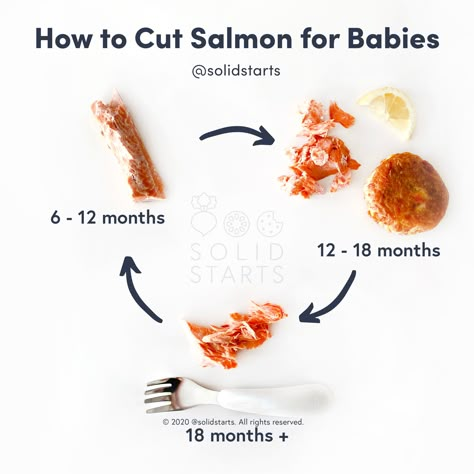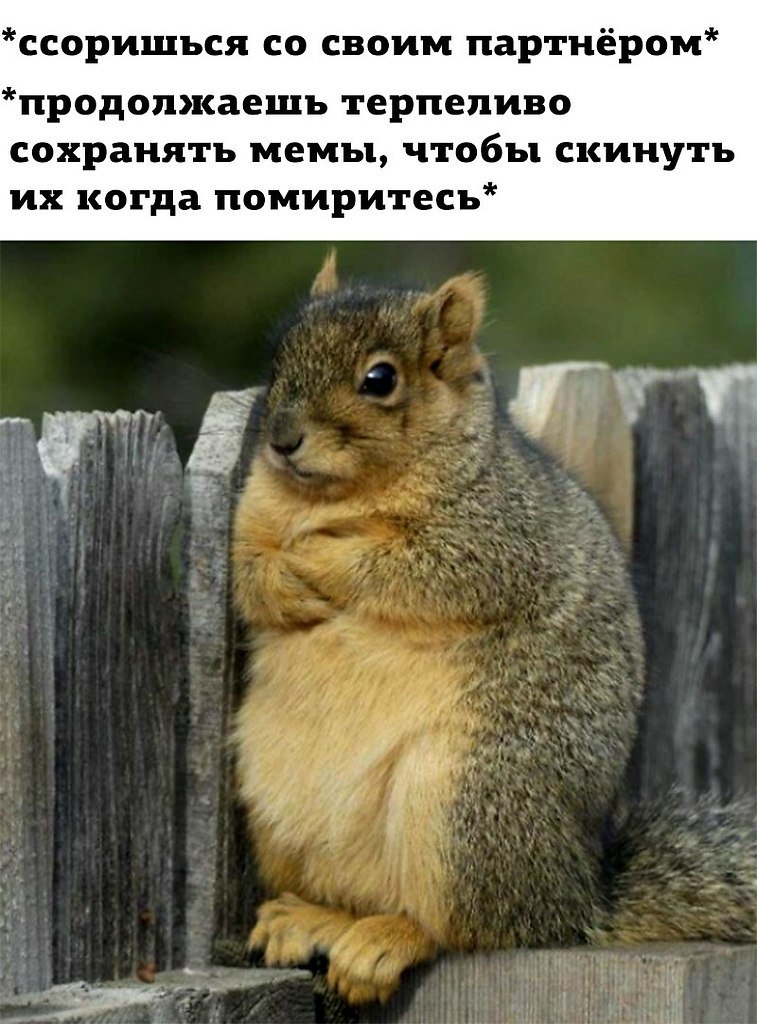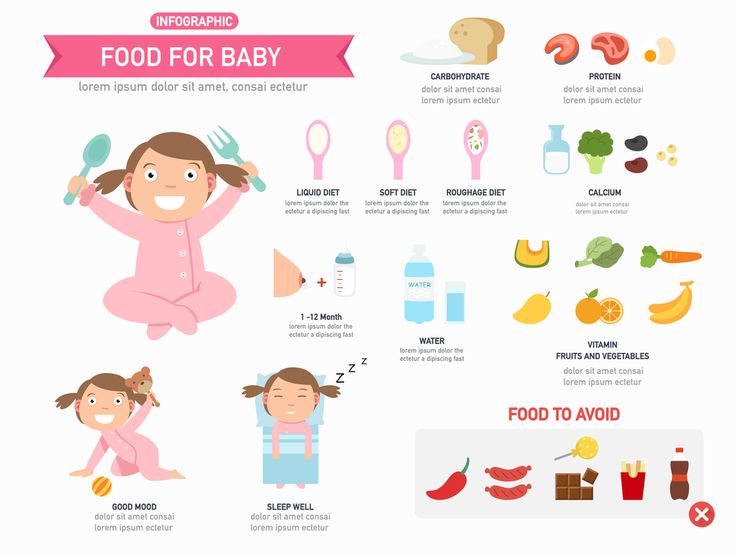When do baby squirrels start eating solid food
Foods for a Seven to Eight Week Old Squirrel
By Jenny Greeni Ablestock.com/AbleStock.com/Getty Images
Nuts are the first food that most people think to offer squirrels, but babies between 7 and 8 weeks old have complex dietary needs. It's also illegal to keep wildlife in most U.S. states, so if a baby squirrel needs help, take him to a squirrel rehabilitator, where he stands the best chance of survival. When there's no choice but to feed the squirrel yourself, puppy formula and vegetables are suitable foods.
Formula
At 7 to 8 weeks old, baby squirrels are still drinking their mother's milk, so they need regular formula feeds. Puppy milk formula powder is the most suitable, mixed at a rate of 1 part formula to 2 parts lukewarm water for babies that are established formula-feeders, or 1 part formula to 4 parts water for recently-found babies, who may be at risk of dehydration, increasing to the full-strength amount. Other types of formula or milk, such as human baby formula, cows' milk, soy milk and goats' milk, are harmful. Between 7 and 9 weeks of age, baby squirrels drink between 6 and 8 cubic centimeters (one-tenth to three-tenths fluid ounce) of formula three times a day.
Food
Baby squirrels begin weaning, eating some solid food while still drinking mother's milk or formula, at between 6 and 7 weeks old. Rehabilitators put primate chow in the nest box to encourage the baby to try solid food, and add other foods over the next two weeks, such as apples, grapes, hard-shelled nuts out of the shell, broccoli stems, kale, green beans and other vegetables. Corn and sweet potato are included in the diet once the baby reaches 9 to 10 weeks. Baby squirrels who are weaning should be given as much solid food to eat as they want. Hamster and gerbil mixes aren't appropriate for squirrels.
Metabolic Bone Disease
Squirrels eating an inadequate diet can develop a disorder called metabolic bone disease. Caused by calcium deficiency, symptoms include labored breathing, low activity levels and appetite, seizures, paralysis and finally, death. Metabolic bone disease is common among squirrels fed squirrel food products containing large amounts of nuts, corn and seeds. Although squirrels love to eat these foods, high levels in their diet makes them ill. If you suspect a squirrel may be suffering from metabolic bone disease, remove all inappropriate foods from his diet and take him to a squirrel rehabilitating center or vet.
Metabolic bone disease is common among squirrels fed squirrel food products containing large amounts of nuts, corn and seeds. Although squirrels love to eat these foods, high levels in their diet makes them ill. If you suspect a squirrel may be suffering from metabolic bone disease, remove all inappropriate foods from his diet and take him to a squirrel rehabilitating center or vet.
Precautions
Water and warmth are more important to lost and abandoned baby squirrels than food. If you're unable to take the squirrel to a wildlife rehabilitation center immediately, warm him up and rehydrate him before offering food. Place a heating device, such as an electric pad or hot water bottle, covered with a blanket or towel, half under the squirrel so that he can move off if he gets too hot, and offer infant rehydration fluid by syringe. Don't squirt the fluid down the squirrel's throat, and always hold him upright to avoid liquid entering his lungs.
References
- Chris's Squirrels and More: Basic Steps to Hand Rearing a Baby Squirrel
- Squirrel Tales: A Manual of Infant Care for Beginners
- Animal Connection Texas: 911 Advice for Squirrels
Resources
- The Humane Society: Squirrels
- Audubon Society of Portland: Urban Squirrels
- National Wildlife Rehabilitators Association: Finding a Rehabilitator
Photo Credits
Writer Bio
A graduate of Leeds University, Jenny Green completed Master of Arts in English literature in 1998 and has been writing about travel, gardening, science and pets since 2007. Green's work appears in Diva, Whole Life Times, Listverse, Earthtimes, Lamplight, Stupefying Stories and other websites and magazines.
Green's work appears in Diva, Whole Life Times, Listverse, Earthtimes, Lamplight, Stupefying Stories and other websites and magazines.
Learn how to nurse and wean baby squirrels.
For the first 7 weeks of their lives, baby squirrels survive solely on milk from their mothers.1 Puppy milk formulas like Esbilac powder make a great replacement for squirrel milk. You can also use standard kitchen ingredients to formulate your own squirrel milk using this Easy Squirrel Milk Recipe.
How to Nurse Baby Squirrels
Feeding milk to baby squirrels requires “specialized” equipment. A syringe or dropper works nicely. If you choose to use a syringe, make sure it’s made of glass. A baby squirrel will gnaw on a plastic syringe, wearing it down and potentially ingesting plastic. Another consideration when choosing your equipment is the size of the opening. To prevent your squirrel from feeding too quickly and choking or getting fluid in his airways, choose a syringe or dropper with a small opening. 2
2
What About Solid Food?
Baby squirrels can start to eat solid food when their eyes open at around 5 weeks of age.2Their incisor teeth should be grown in by then, so it’s ok to give them harder foods as long as those foods aren’t surrounded by a shell. In fact, the ability to crack a walnut is a sign that a young squirrel is ready to be released.2
How to Wean Baby Squirrels
The weaning process begins when a young squirrel is 8 weeks old and will last for 2 to 4 weeks.1,2,3 Therefore, a squirrel should be eating only solid foods by the time he is 10 – 12 weeks old. To wean your squirrel, you’ll need to introduce solid food into his diet while reducing his milk intake. There are two obvious ways to do this.
The most straightforward method is to replace a portion of the milk with solid food. Then, increase the proportion of food to milk every week. A feeding schedule based on this method might look like this:
Age Food
1 – 7 weeks only milk
8 weeks replace 1/4 of milk with solid food
9 weeks replace 1/2 of milk with solid food
10 weeks replace 3/4 of milk with solid food
11 weeks only solid food
Another method of weaning squirrels is to start diluting the milk with water at 8 weeks of age and adding solid food to the squirrel’s diet at the same time. Since the composition of a mother squirrel’s milk changes over the course of the nursing period,1 this method might be preferable. Here’s an example of a feeding schedule using the dilution method:
Since the composition of a mother squirrel’s milk changes over the course of the nursing period,1 this method might be preferable. Here’s an example of a feeding schedule using the dilution method:
Age Food
1 – 7 weeks only milk
8 weeks dilute milk until 1/4 of it is water; add solid food
9 weeks dilute milk until 1/3 of it is water; add solid food
10 weeks dilute milk until 1/2 of it is water; add solid food
11 weeks only solid food
Related Posts
- What Do Squirrels Eat?
- How to Figure Out the Age of a Baby Squirrel
References
1 Nixon, C., & Harper, W. (1972). Composition of gray squirrel milk. The Ohio Journal of Science, 72(1), 3-6. Retrieved from https://kb.osu.edu/dspace/bitstream/handle/1811/5665/V72N01_003. pdf?sequence=1
pdf?sequence=1
2 Cherney, L. & Nieves, M. (1991). How to care for orphaned wild mammals. Iowa State University Veterinarian, 53(2), 94-99. Retrieved from http://lib.dr.iastate.edu/cgi/viewcontent.cgi?article=3394&context=iowastate_veterinarian
3 Webster, D., Parnell, J., & Biggs, W. (1985). Mammals of the Carolinas, Virginia, and Maryland. Chapel Hill and London: The University of North Carolina Press.
Author KarenPosted on Categories Baby Squirrels, How-To ArticlesSquirrel
A fur-bearing animal that leads an arboreal lifestyle. The common squirrel is distributed throughout almost the entire territory of Eurasia.
Squirrels are cute but wild animals. Not every animal can become so tame that you can safely let it out around the room and even pick it up. Adults picked up from the street, as a rule, remain wild, never getting used to human care. A rescued baby that has fallen out of the nest can become a true friend for you, as it will get used to you from an early age.
A rescued baby that has fallen out of the nest can become a true friend for you, as it will get used to you from an early age.
Picking up a squirrel or an adult squirrel, you let one more family member into your house and thus take responsibility for its future fate.
Adult individuals fall into the hands of a person with various diseases, since a healthy animal is quite dexterous, and it is almost impossible to catch it. The most common ailments are all kinds of injuries: fractures, dislocations, biting wounds, and so on. As well as infectious diseases that can be dangerous to humans. Therefore, having picked up a squirrel, the first thing to do is to show it to a veterinarian who will conduct a full clinical examination, and, if necessary, prescribe additional laboratory tests (analyzes, ultrasound, x-rays, etc.), prescribe treatment and give you advice on care, maintenance and feeding the animal.
Squirrels give birth to two litters per year from 2 to 12 cubs each. The first estrus occurs in January-March, the second - in the summer. Duration of pregnancy, on average 30-40 days.
The first estrus occurs in January-March, the second - in the summer. Duration of pregnancy, on average 30-40 days.
Baby squirrels are born naked and blind, with a body length of 5-5.6 cm and a weight of 7.5-8.5 g. On the 14th day, hair begins to appear. The incisors erupt on the lower jaw on the 21-23rd day, on the upper - on the 37-41th day. Eyes open at 30-32 days. At the same time, baby squirrels wake up with a wild interest in the environment, they look out of the nest and, due to their inexperience, can fall out.
At 14-21 days the squirrels are overgrown with thin fur, eyes are closed, weight 35-60 g, body length 12.5-17.7 cm.
At 40 days they try to find food themselves.
They start independent life at two months.
Puberty at 5 months.
If you picked up a baby, it must be warmed, watered and fed. The optimum temperature for a squirrel is 27ºС.
Suitable for feeding: cow's or goat's milk diluted 1:1 with boiled water or milk replacer for kittens. Feed carefully one drop from a pipette so that the baby does not choke. Massage your tummy before and after every feeding.
Feed carefully one drop from a pipette so that the baby does not choke. Massage your tummy before and after every feeding.
If the squirrel begins to choke, stop feeding, hold him upside down and wipe his nose and mouth, then continue to feed even more slowly.
Approximate feeding schedule for baby squirrels depending on age:
| Age | Meal per meal | Feeding frequency | Feeding interval |
| 1 day to 14 days | 0.5 - 2 ml | 6 - 8 times a day | 2 - 3 hours |
| 14 -28 days | 2 - 4 ml | 5 - 6 times a day | 3 - 4 hours |
| 4 - 6 weeks | 4 - 6 ml or more | 4 times a day (you can stop feeding at night) | 4 – 5 hours |
| From 6 weeks | 6 - 12 ml | 2-3 times a day | 6 – 12 noon |
From the age of six weeks, squirrels can eat more solid food: white bread soaked in goat's milk. Gradually, “adult” food is included in the diet (at first in crushed form). Milk mixture can be given until the animal itself refuses it.
Gradually, “adult” food is included in the diet (at first in crushed form). Milk mixture can be given until the animal itself refuses it.
An adult squirrel is fed twice a day, offering a variety of foods: pine nuts, hazelnuts and walnuts in the shell, acorns, raw pumpkin and sunflower seeds (not fried!), dry and fresh mushrooms, bananas, apples, pears, dried fruits, carrots , white crackers, raspberries, blueberries, blueberries, mountain ash, viburnum, bark, buds, shoots, cones of firs and pines, raw and boiled quail and chicken eggs, egg shells, chalk, charcoal, flour worms, low-fat cottage cheese, butter ( rare and few).
Almonds are poison for squirrels!
Approximate daily ration for a squirrel: 10-15 g of white bread (not rich), 15-20 g of nuts, 20-25 g of fruits and berries (dried fruits in winter).
Extract from the Diet Book:
| No. p/n | Designation | Periodicity of issue | Quantity g/1 head/day |
| 1 | Wheat bread | daily | 10 |
| 2 | Hazelnuts | daily | 10 |
| 3 | Walnuts | two days later | 10 |
| 4 | Pine nuts | daily | 10 |
| 5 | Ground nuts | daily | 10 |
| 6 | Chestnut | every other day | 10 |
| 7 | Sunflower seeds | daily | 10 |
| 8 | Pumpkin seeds | daily | 10 |
| 9 | Apples | every other day | 5 |
| 10 | Carrot | every other day | 5 |
| 11 | Cabbage | every other day | 5 |
| 12 | Fruits, berries | daily | 2 |
| 13 | Dried fruits | daily | 2 |
| 14 | Sugar Cookies | for work | 2 |
| 15 | Hemp | daily | 2 |
| 16 | Dry mushrooms | daily | 2 |
| 17 | Salad | daily | 2 |
| 18 | Curd | daily | 2 |
| 19 | Milk | daily | 3 |
| 20 | Butter | daily | 2 |
| 21 | Chicken egg | every other day | 1 |
| 22 | Honey | alternate | 2 |
| 23 | Jam | alternate | 2 |
| 24 | Salt | daily | 2 |
| 25 | Chalk | alternate | 2 |
| 26 | Bone meal | alternate | 2 |
| 27 | Flourworm | daily | 2 |
| 28 | Fish | daily | 2 |
| 29 | Grass, branches | daily | ad libitum |
| 30 | Cones | daily | ad libitum |
| 31 | Needles | daily | ad libitum |
In winter, for the prevention of beriberi, honey or vitamins A, D, E in oil can be added to food or drink 1 drop per animal 1 time per week.
Do not use boiled or tap water, filtered water or well water will do. Water is changed twice a day. Squirrels willingly drink milk, juices and tea.
All products must be fresh and of good quality.
Do not feed the squirrel spicy, salty, smoked, fried, with spices, etc. Do not abuse sweets.
If possible, an outdoor enclosure should be built for the squirrel. Approximate dimensions are 2x1.5x1.5 m. Three walls are made of a metal mesh with cells of 10-15 mm2. The fourth wall and the roof are made deaf. Along the perimeter, boards are made 10–20 cm high in order to protect the animal from possible pests (cats, dogs, etc.). For ease of cleaning, you need a door that should close well. A snag with branches and wooden shelves are placed inside the enclosure, along which the animal will frolic, and on which it will grind its claws. Also, the squirrel needs a house - shelter. It is necessary to provide building material for home improvement - it can be wool, scraps of fabric, and so on.
Feeders and drinkers must be securely fastened so that the animal cannot knock them over.
If it is not possible to keep the squirrel in an aviary, you will need a cage with a minimum size of 60x50x50 cm. The frame must be metal, otherwise the squirrel will be able to get free. Outside the cage it is worth equipping the wheel. Wooden shelves and driftwood are placed in the cage, as well as a shelter house and landscaping material.
The cage is placed opposite the window. If the cage is to be moved outside or onto a balcony, a solid roof is required, as squirrels are very sensitive to direct sunlight and are easily subject to sun and heat shock.
In nature, squirrels are more active in the morning and at dusk, but they can also adapt to other modes.
Cleaning should be done 2-3 times a week, but at least once a week. Squirrels are very attached to their smell, so do not use detergents. Frequent cleaning will save you from unpleasant odors. Once a month, it is worth pouring boiling water over all interior items and a cage for disinfection.
Squirrels molt twice a year: in autumn they change their red summer clothes for gray winter clothes, and vice versa in spring.
The squirrel needs your attention all the time.
If you picked up a squirrel and fed it with a pipette, in the wild it will not be able to feed itself on its own, because it simply does not know how to do it. Such an animal cannot be released into the wild, it will not be able to live without your care.
If you picked up an adult sick squirrel and left it, but it did not become tame, you should think about returning it to nature. It is best to do this in April - May, when the spring rut is over, in order to avoid violence from relatives, and there is still a whole summer ahead and the animal will have time to acquire supplies for the winter. It is necessary to release the squirrel into the wild into the habitual halo of habitat - to where you took it from.
And remember: a squirrel, like any other animal, is a potentially dangerous source of infectious, invasive and parasitic diseases for humans!
Veterinarian
Umka clinic
Khomazyuk
Olga Vladimirovna
For any questions regarding the health of your pets
, you can contact our clinic at:
st. Novomostitskaya, 2, tel: 067-100-34-75 from 9.00 to 21.00
Novomostitskaya, 2, tel: 067-100-34-75 from 9.00 to 21.00
ave. Minsk, 10, tel: 098-598-57-28 from 9.00 to 21.00
from 14.00 to 15.00 Sanitary hour
Umka Veterinary Clinic
www.umka-vet.com.ua 9000 – encyclopedia of animal species
Your city:
Moscow
Login / Register
Make an appointment
Search by 17 branches, 30 doctors, 513 services, 797 articles!
Encyclopedia of Animal Species
Encyclopedia of Diseases
Here you can find various animal diseases classified in different categories
Symptom Encyclopedia
This section will help you identify which symptoms correspond to a particular disease
Encyclopedia of Misconceptions
Refuting Widespread Misconceptions About Animals
Dictionary of veterinary terms
Find the meaning of any veterinary term you are interested in
Publications of specialists
Articles on the most topical issues are presented. For your convenience, the articles are divided into categories.
For your convenience, the articles are divided into categories.
The common squirrel (Sciurus vulgaris), also called veksha, is a rodent from the squirrel family. This is the only representative of the squirrel genus that lives in the fauna of Russia.
Content in captivity
Squirrels are wild animals and therefore keeping them at home causes many problems for both humans and animals.
The appearance of these animals in apartments occurs, as a rule, in two ways. The first is when people thoughtlessly and, having taken pity on the animal, as a rule, it is a squirrel, take it to their home, having no place to keep it and having little information about its needs. The second is a deliberate and “planned” establishment of such an animal at home.
The life expectancy of an ordinary squirrel in an apartment is 10-11 years, with good conditions of keeping and feeding.
The fastest and easiest of all to adapt to a new environment are young animals, most of them forget about their former habitat in a day. Sexually mature males caught during the mating season adapt in the apartment in 2 to 3 days. Pregnant females will need more time for this, sometimes up to 2 weeks. Some adult squirrels caught in captivity are very hard to endure separation from nature and may even die. Therefore, if you still have a need to have such a fluffy animal at home, then it is best to take a tame animal.
Sexually mature males caught during the mating season adapt in the apartment in 2 to 3 days. Pregnant females will need more time for this, sometimes up to 2 weeks. Some adult squirrels caught in captivity are very hard to endure separation from nature and may even die. Therefore, if you still have a need to have such a fluffy animal at home, then it is best to take a tame animal.
Before you bring a squirrel into the house or after you have brought it to your apartment, you need to create the right conditions for it to make the animal feel good.
Squirrels are very mobile and playful animals, they can run and climb for hours. Therefore, how comfortable it will be for her to live at home depends largely on the size of her new home. The best thing you can offer her is a high aviary made of metal mesh, its minimum dimensions are 60cm high, 50cm long and 50cm wide. If it is located on the street or on a balcony, then it must be covered with a gable roof made of tin. It is necessary to locate housing for squirrels in a place without drafts, heating and noise. There should be a nest in the enclosure - like those that a squirrel builds for itself in the wild, but a birdhouse is also suitable. There should also be one large or several small branches so that the animal can run along them and grind off claws, boards, perches and shelves on which the animal will sit. The squirrel also needs a wheel to satisfy its increased motor activity, which is best placed outside the cage.
There should be a nest in the enclosure - like those that a squirrel builds for itself in the wild, but a birdhouse is also suitable. There should also be one large or several small branches so that the animal can run along them and grind off claws, boards, perches and shelves on which the animal will sit. The squirrel also needs a wheel to satisfy its increased motor activity, which is best placed outside the cage.
If you purchased or adopted a wild animal from nature, then for its speedy adaptation to home conditions and with less stress for it, the aviary (cage) should be filled with spruce branches. Then the squirrel will feel more relaxed.
The most difficult period in the domestic life of squirrels comes during the molt, which occurs 2 times a year. Some animals become lethargic, drowsy, while others, on the contrary, become more active or behave as usual. Spring molting in an ordinary squirrel occurs immediately after estrus. In males, the molt begins earlier and drags on until mid-summer. Females molt later than males, but more intensively, it ends by the birth of baby squirrels.
Females molt later than males, but more intensively, it ends by the birth of baby squirrels.
For pet owners, molting does not bring any big trouble, as it passes gradually. But still, it is recommended to place plates of any material 10 cm high around the perimeter of the base of the cage or aviary. Her nest should not be disturbed, as they love their smell very much and are very worried when they do not touch it. Feeders need to be washed every day, just once a day to change the water in the drinker or bowl.
Some people keep protein in an apartment outside the cage or are often let out of it. On the one hand, this is good for animals, only on the condition that there are no objects and things in the apartment or are inaccessible that can harm the animal, since they fully satisfy their need for physical activity, but on the other hand, they create very big problem for the owners. Squirrels rush tirelessly from the wall, to the wardrobe, wardrobe and mezzanine, from the curtains to the chandelier and, of course, to the heads of the owners. They also leave feces and marks of their teeth everywhere - on books, tables, furniture, they tirelessly take all kinds of food on linen and bookcases, shoes, on sheets and pillows, making all kinds of supplies.
They also leave feces and marks of their teeth everywhere - on books, tables, furniture, they tirelessly take all kinds of food on linen and bookcases, shoes, on sheets and pillows, making all kinds of supplies.
Just before letting the squirrel roam freely around the apartment, you need to remove all substances and objects that are dangerous to the health of the animal, as well as close the electrical wiring. You can not open windows and doors, since it is not realistic to return the animal that jumped out of the apartment.
If the squirrel escapes from the cage, then it is impossible to catch it. This is a very dexterous animal, but even during stress during fishing it can not resist and, falling, get injured. Therefore, when the animal gets hungry, it will go into the cage itself for food.
In order for the squirrel to feel good at home and not get sick, in addition to the correct conditions of detention, it must be properly fed. Her diet should include pine nuts and hazelnuts, fresh and dried mushrooms, acorns, seeds, fresh eggs, insects, worms and beetles. She also needs spruce and pine cones with seeds, buds on spruce and pine branches, young birch leaves, willow and aspen catkins, blueberries, lingonberries, cloudberries. In a word, everything that they eat in the wild. A squirrel should not eat sweet, peppery and food prepared for a person. We must not forget that a squirrel is primarily a rodent. So that animals do not experience a deficiency of minerals, when kept at home, they need to be given crushed eggshells, chalk, or calcium gluconate or calcium glycerophosphate tablets, raw spongy bones, and coarse table salt.
She also needs spruce and pine cones with seeds, buds on spruce and pine branches, young birch leaves, willow and aspen catkins, blueberries, lingonberries, cloudberries. In a word, everything that they eat in the wild. A squirrel should not eat sweet, peppery and food prepared for a person. We must not forget that a squirrel is primarily a rodent. So that animals do not experience a deficiency of minerals, when kept at home, they need to be given crushed eggshells, chalk, or calcium gluconate or calcium glycerophosphate tablets, raw spongy bones, and coarse table salt.
In order to be able to have a pleasant time and communicate with a squirrel, it must be calm and tamed, otherwise such contact will bring nothing but stress for the animal and biting the owners. You need to start contacting the animal immediately after its period of adaptation in the apartment. In order to make friends with a squirrel, it is necessary to treat it with food from the hands as often as possible, ensuring that it itself makes contact.











